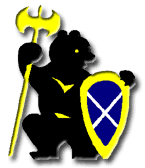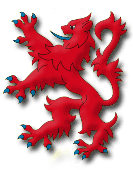ROSS: The Movement Principles
The relative ease which students take to R.O.S.S. can be attributed to the uncomplicated movement and fixing patterns associated with the style. The five principles guide all the elements of R.O.S.S. from striking, defensive postures, throwing and groundwork.
The Triangle
The Triangle is often the first principle that students grasp, however as they develop a deeper and more reflective understanding of the system, they become aware that rarely is a principle utilised in isolation from the others. The Triangle is important as it forms the basis of blocking movements, simple grip breaking in Buza work and an understanding of where to direct force when taking an opponent to the ground. Your opponent in the standing grappling position will have two feet on the ground. Depending where the force is being directed you will be the third point of the triangle or the third point will not be fixed and located at the back/side of the person (relative to his leg spread and foot positions). Directing your own or your opponents force to that third triangle point will be successful in taking an opponent to the ground.
The Question Mark
The Question Mark is the second principle and somewhat more complex to understand in application. The hook of the Q-Mark often depicts the movement of the end of your opponents lever and the the tail is the redirection of force/movement of that lever. Students can report difficulty in visualising the planes of movement that the Q-Mark operates in. If we describe the body planes from the anatomical position (standard reference point in anatomy studies), there are three major planes of movement. The median sagittal plane (For those of you lucky enough to have six pack abdominal muscles), imagine the centre line of the six pack - the linea alba, extending upwards/downwards and dissecting the body in half. The coronal or frontal plane which divides the body vertically from front to back and the transverse or horizontal plane that cuts through the body into upper and lower, at various points. The Q-Mark can travel through each of these planes and also any rotational point between the planes. This is also true for the other principles.
The Wave
The Wave or Carousel movement is often associated with rapid redirection of an opponents force and movement. It takes advantage of the central nervous systems comparative inability to make rapid changes to shifting balance, muscle tone/length when the system becomes flooded with adrenalin. Prior learning also inhibits an opponent’s ability to respond in these situations to the varying movement of the wave.
The Spiral
The Spiral owes its application to fencing. The motion of the spiral can redirect an opponent’s force and it can also be used to take advantage of the levers and joints in an opponent’s body. A Spiral takedown utilises closing down muscle groups to collapse the joints in the lower limb.
The Figure Eight
The Figure Eight is a power movement used within striking and can be used in a variety of movement planes. The motion is used to gain force and the strike is delivered where the opponent interrupts the movement of the Figure Eight. It can be used to absorb force and as a powerful redirection principle when applied to close quarter striking in to grappling.
The principles are also used in weapon work. It is important to realise that combinations of principles are the most common route for success for the competent R.O.S.S. practitioner. Attending a class is the best way to learn these principles. Whilst the current fad tends to be aimed at (for any martial arts), buy two videos and send us £50 and suddenly your an instructor, it is unlikely that any serious and sustainable competency has been developed. Whilst the movement principles are not complex in themselves at first glance, it is the detailed application/understanding that makes a successful and competent R.O.S.S. Instructor. This can only be achieved through class attendance and experiencing it first hand.

